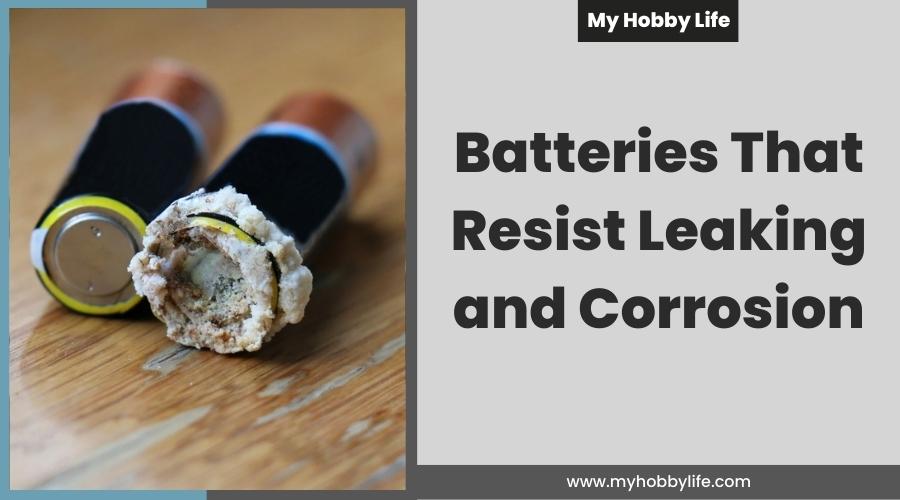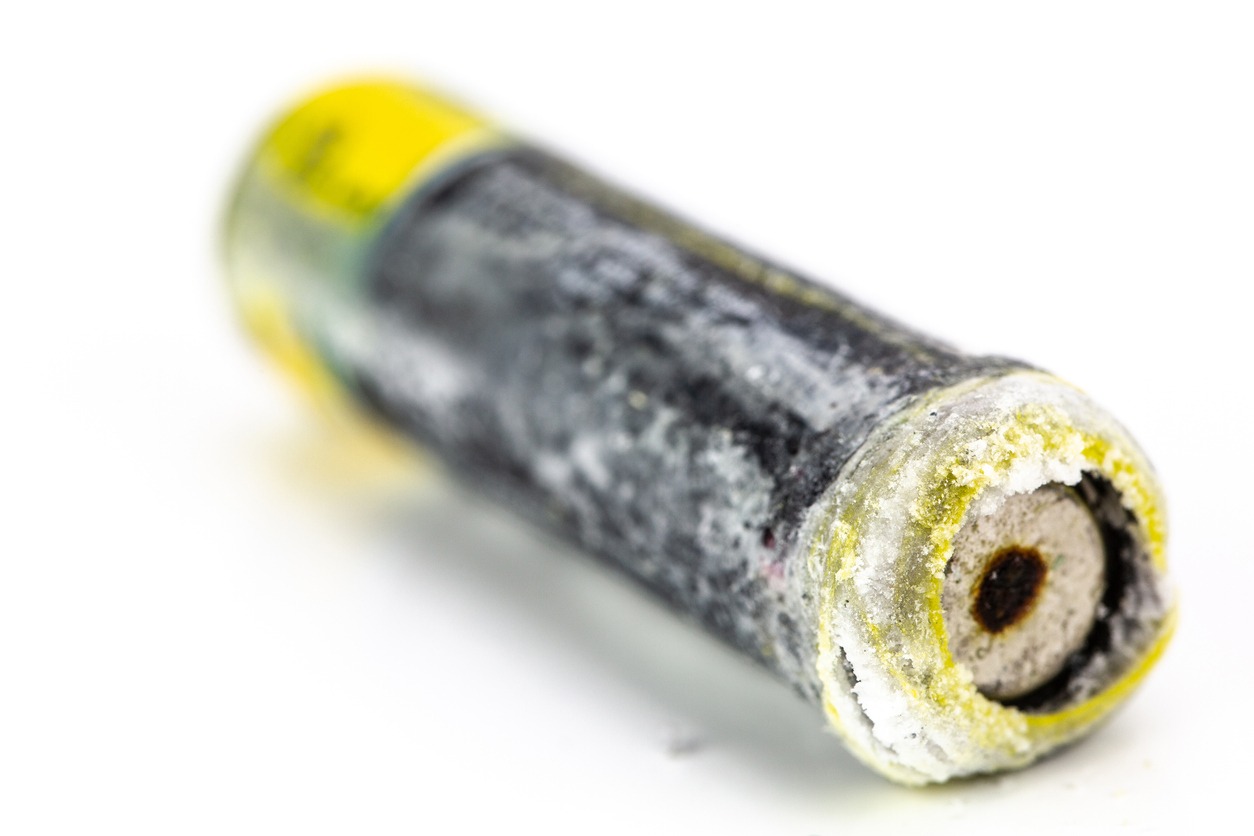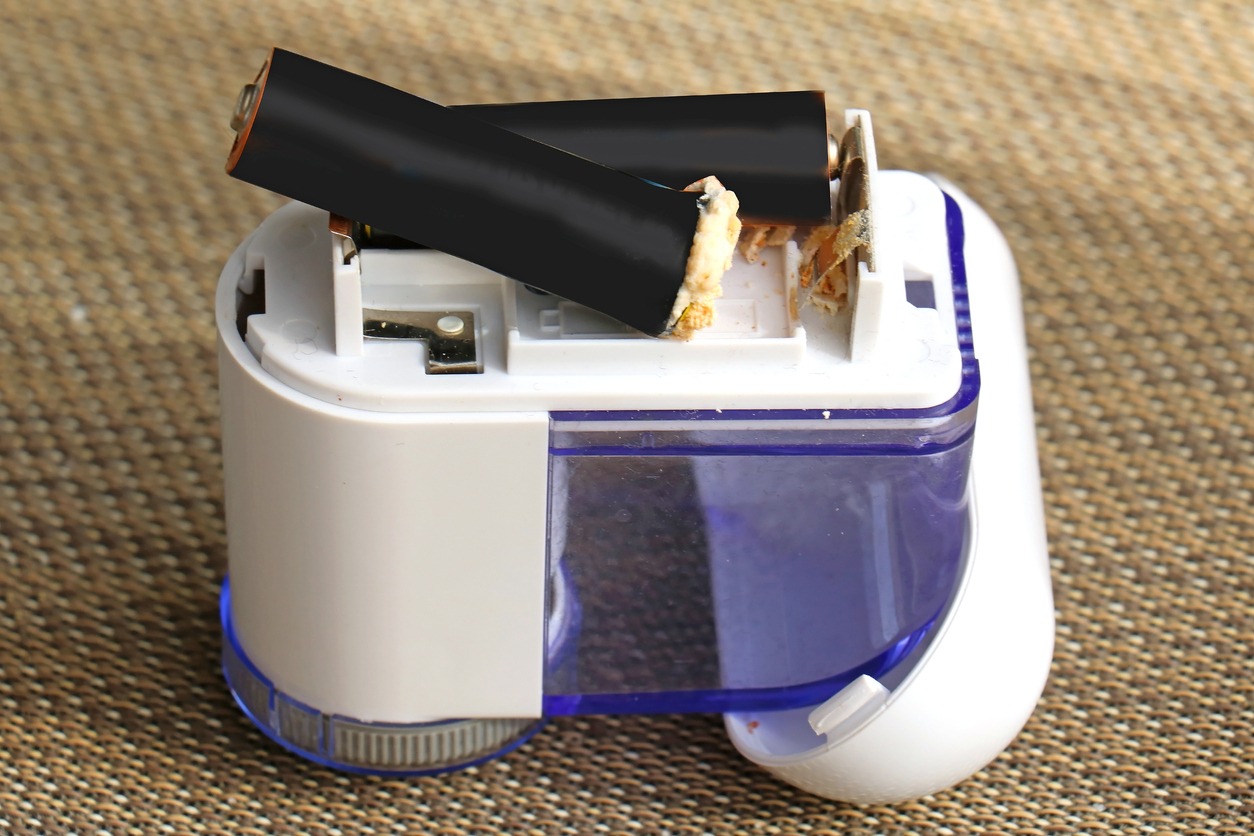Have you ever encountered opening up a long unused device to put in new batteries to use it again, only to find out that the battery compartment is full of corrosion and leakage? Distressing, isn’t it? And how many of you have experienced that?
Cleaning up a messy device is possible, but it is incredibly difficult. However, you can avoid this unpleasant situation – by remembering to remove the batteries before storing any device after using it. Be it a calculator, a face massage tool, an electric shaver, a home fire detector, or a milk frother. It’s a simple thing to do, but most of us forget or neglect to do it. Obviously, if the batteries are not left inside the device, they won’t leak.
Another way to prevent leaks and corrosion is to find batteries that are less likely to leak.
So, why do batteries leak?
Batteries contain chemicals that react with each other to provide electrical power. In the case of alkaline batteries, hydrogen gas is one of the outcomes of that reaction. This occurs as the batteries discharge, which can happen slowly on a shelf or, more quickly, inside a device. It’s because most devices continue to draw minuscule amounts of power from the batteries even when they’re turned off. This is obviously seen in some devices when they have a small light to note “on” or “off” or a display of some sort.
Increasing heat can also contribute to the batteries’ continuing discharge process, especially when you go outdoors and under the sun.
The discharge’s hydrogen gas causes the pressure inside the cylinder to increase. At some point, the seals of most battery brands become unable to retain their integrity, and the gas and fluids are released through the damaged seals.
The white fluff you see on leaked batteries is potassium hydroxide, which can irritate to the skin, eyes, nose, and lungs if contacted. That’s why you should be careful when removing these leaked batteries from the device and cleaning them by wearing protective gear.
What causes corrosion?
When potassium hydroxide gets in contact with the air, the carbon dioxide reacts with it, resulting in potassium carbonate. That’s the white powdery substance that we call corrosion on the battery’s surface, usually on the negative tip and in the battery compartment. The cause of it is most often seen on the negative end appears that the positive end has some venting built in.
The potassium carbonate looks like rock salt. While it is unlikely to cause significant problems, it is still best to be careful when handling the leaked battery to keep it from ingesting, inhaling, or getting in contact with it.
How can corrosion be fixed?
You can get rid of potassium carbonate with the help of an acid, such as vinegar or lemon juice. Gently add the acid using a cotton swab or a bit of paper towel. Try to keep the corrosion so it will not negatively affect the other parts of the device. The liquid and the potassium carbonate will cause a fizzing reaction that softens the white fluff, which allows you to remove it easily with a used toothbrush or clean cloth.
When cleaning a battery compartment that’s messed up by corrosion, it’s best to do that with a cotton swab.
Finding batteries that resist leaking and corrosion
Most rechargeable batteries can resist leaking and corrosion. Lithium batteries react differently as they discharge, limiting the likelihood of leaking, even after a long period of not being used. On the other hand, alkaline batteries are more prone to leaking, although some alkaline batteries today are specifically designed not to leak.
The following battery brands that are least likely to leak:
Energizer Max Alkaline
The company, Energizer, offers a family of batteries that promises a “No Leaks Guarantee.” Available in both AA and AAA, these batteries are designed to protect your devices from leakage for up to two years and, at the same time, to provide them with long-lasting power. The Energizer Max Alkaline batteries can hold their power for up to 10 years while still in storage, allowing you to power your devices when needed. Protecting your devices while powering them – there’s nothing better than that.
Panasonic Eneloop Rechargeable Batteries
As said before, most rechargeable batteries can resist leakage and corrosion. And so, they generally perform better than alkaline batteries, for that matter. You can buy a multi-pack of batteries, plus a charger with a USB port, six AA batteries, four AAA batteries, four C sizes, and four D sizes. The charger will automatically shut itself off when it’s done charging your devices, furthermore reducing the likelihood of battery leakage and corrosion.
Panasonic Eneloop batteries are Nickel-Metal Hydride (Ni-MH), enabling them to be recharged from any level without the notorious “memory effect” that plagues older rechargeable batteries.
Any solar battery charger
Refill your rechargeable batteries in a safe, clean, and environmentally friendly way by using the power of the sun. As you expect, solar battery chargers extract energy from the sunlight to refill rechargeable batteries. Most solar battery chargers are compatible with all sizes (AAA, AA, C, and D) and types (Ni-MH and Ni-CAD) and typically come with a lid with the solar panel on its top.
They are simple to use – just insert the rechargeable batteries into the solar battery charger, close it with the lid, and place the charger into the sunlight.
The takeaway
The most important thing to remember is to remove the batteries from any electronic device that will be unused for an extended period instead of leaving the batteries inside the device and forgetting them. It will prevent leakage and corrosion.
But in case of forgetfulness, then buying batteries with anti-leakage and corrosion protection shall be the best thing. You may leave your batteries in the device and have peace of mind.
Don’t put batteries in a backward position in an attempt to store them. Some devices may be damaged by reversing the polarity of the batteries in the compartment. It is much safer to remove them altogether.


